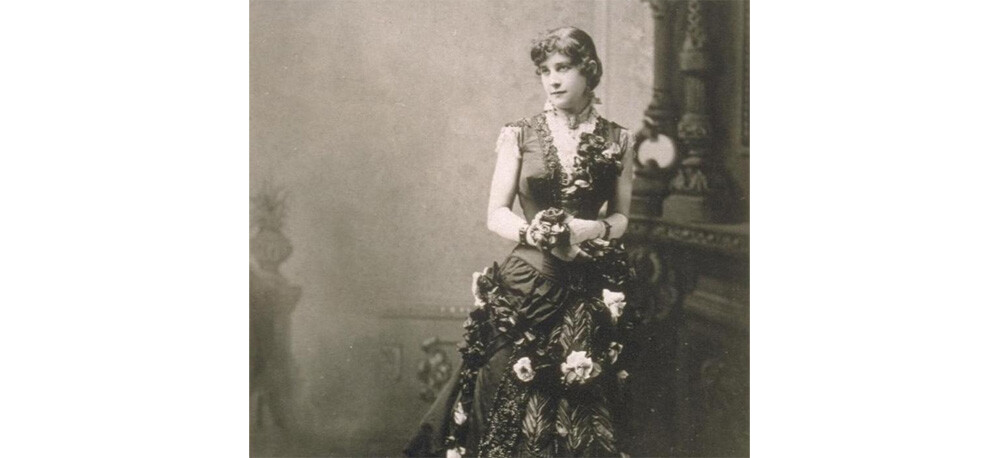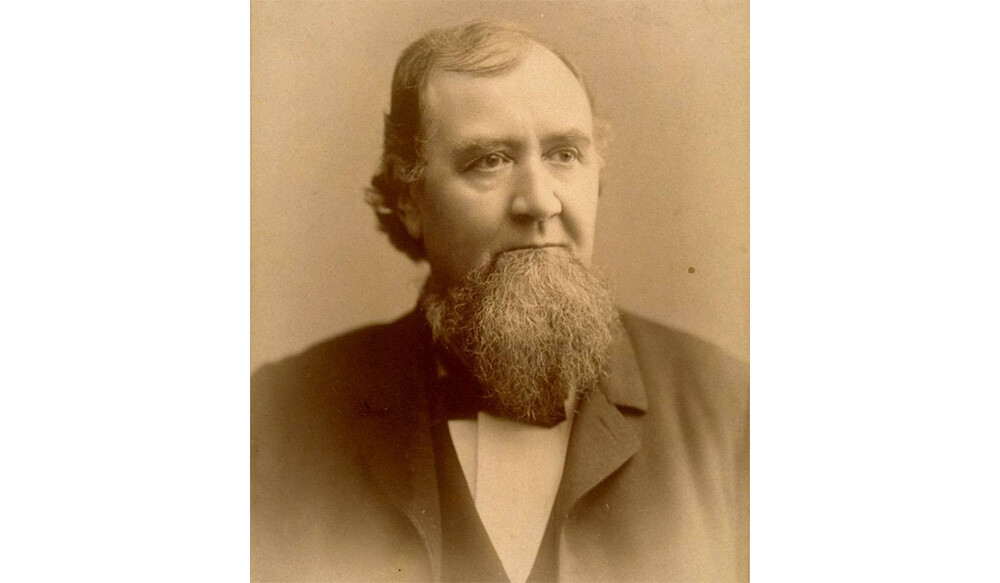5 Soap Opera-Worthy Moments in Supreme Court History

This Christmas, we wish for peace on Earth, good will to all, and — above all else — juicy legal drama.
Yes, legal drama. And we’re not thinking so much about the cases themselves and their consequences on the law, as important as all that is. We’re thinking about the crazy stuff that happens behind the scenes to the judges on the bench. The Supreme Court really is like a soap opera in many ways. It’s full of twists, they spend lots of time wearing robes, and sometimes, people die. For instance…
A Case Gave One Justice a Breakdown and Another a Stroke
Don't Miss
In 1961, the Supreme Court sat down to consider the issue of redistricting in Tennessee. Some of you reading this immediately checked out on hearing those boring words (while others are salivating and eager to read more about the case). But the court wasn’t hugely concerned about whether electoral boundaries should be A or electoral boundaries should be B. They were mostly concerned about whether they should have the right to weigh in on the matter at all. They were super concerned about this, so much so that it drove one judge mad and sent another to an early grave.

On one side was Justice Felix Frankfurter, who said the Court needed to keep its hands clean of anything so blatantly political. Frankfurter usually argued a limited role for the court, which is what you’d call a conservative point-of-view, but the man also co-founded the ACLU (this stuff doesn’t always fall along neat partisan lines). On the other side was what we’d call the court’s liberal wing. Caught in the middle was Justice Charles Whittaker, who seemed destined to be the swing vote. Whittaker wasn’t sure what he wanted. He wrote out two decisions, one for each side, just while he was thinking it all over.
Then it became too much for him. You know how we said earlier that some readers probably checked out? Whittaker really checked out. He stopped coming in to work. He went and lived in a cabin in the woods. He had suffered a nervous breakdown — which is a phrase we don’t use nowadays, since we prefer a more specific mental diagnosis, but no one made a proper diagnosis of what had happened to Whittaker. He was suffering from physical exhaustion, people would later say, euphemistically and inaccurately. Those who visited him in the cabin reported on him sitting in one spot and never speaking.

Officially, he was still part of the court during all of this. Finally, his buddies on the bench got him to check himself into a hospital, and then to retire. He had served for just five years. For comparison, Justice Neil Gorsuch has already been on the Supreme Court for longer than that.
A year passed between when the court heard arguments in this case and when they finally issued their decision. The ruling was 6 to 2, which meant Whittaker wouldn’t have been the swing justice after all and perhaps needn’t have stressed so much over his choice.
Two weeks after the ruling went out, Frankfurter had a stroke. That meant JFK now had to fill two Supreme Court vacancies at the same time. We’re willing to say the case had had a hand in that stroke. The man was 80 years old, and you can only immerse a Frankfurter in hot water for so long before something bursts.
One Law Student Asked Another to Marry Him. They Ended Up on the Supreme Court Together
Here are two names we trust you recognize: Sandra Day O’Connor and William Rehnquist. O’Connor was on the Supreme Court for 25 years, ending in 2006. Rehnquist was the Chief Justice before John Roberts. But did you know the two dated? No, not during their 24 years on the bench alongside each other, but decades earlier.

Department of Justice
The two attended Stanford Law together in the early 1950s. They were partners, both in love and in moot court — that’s a type of competition, like a sport but for law nerds. They placed second in moot court, which means two other Stanford students must have been better at law stuff than Rehnquist and O’Connor and presumably went on to even greater renown, on the Galactic Court.
Obviously, young Sandy and Bill had no idea they’d later be Supreme Court justices together. No one knows decades in advance that they’ll be a Supreme Court justice (other than Bart Simpson), but also no couple who dated back then could expect to be on the Court together, since no woman had ever served on the Supreme Court, or would for the next couple decades. President Ronald Reagan picked O’Connor after promising to nominate a woman while campaigning in 1980. FWIW: When Biden campaigned in 2020 and said he’d nominate a Black woman, some critics said no one should make such a promise, but he had not been the first president to do something like that.

After he graduated, Rehnquist wrote to Sandra Day, asking her to marry him. She turned him down, having already moved on to another guy, future husband John. When the two did become Supreme Court justices, no one knew he’d once proposed to her. Not till years later did a biographer dig up the letter and uncover the truth. This must be why it is now standard to interrogate all nominees about calendar notes they took while in college.
Sandra and John were married almost 60 years, till his death in 2009. She retired from the court to take care of John, as he was suffering from a most soap operatic disease: amnesia. Okay, doctors are more likely to refer to it as “Alzheimer’s,” but it meant that during his last years in a nursing home, he couldn’t remember who she was. He actually fell in love with someone else at the nursing home, and O’Connor said she was cool with this. We don’t think she took this opportunity to rekindle the romance with Rehnquist, as Rehnquist was dead by this point, but like we said, you never know.
Someone Planted Weed in a Justice’s Yard
Someone allegedly planted weed in a justice’s yard. The one doing the alleging was a Supreme Court justice, and the one allegedly doing the planting was the Nixon administration, so we’re kind of inclined to side with the accuser in this case.
The justice was William Douglas, who served in the same court as Frankfurter and Whittaker. Like Whittaker, he had a cabin, but his sojourns there sound like healthy vacations rather than mental breaks. The cabin sat in a bit of wilderness in Washington state, close to the city of Yakima.

In 1969, the year Nixon first took office, Douglas noticed federal agents poking around the property. “They were merely counting fence posts,” he said to himself. Federal agents don’t scare a judge. They’re a comforting sight, actually. The following year, however, he said his sources told him the agents’ true goal: They had been planting marijuana on the land, with hopes of staging a televised raid on the cabin of the high court judge.
In a letter about these agents, Douglas claimed he didn’t know what marijuana looks like (when either “growing or dried”), but if anything, that adds credence to his suspicions. If he said he thought he saw marijuana, we’d joke about what innocent plant he mistook for cannabis. Instead, his claim rested not on any attempted visual identification but on inside sources from New York.

The plan here, apparently, was to disgrace Douglas so Nixon could replace him with someone more pliable. Douglas would, as predicted, go on to be an inconvenience for Nixon, one time singlehandedly halting the president’s bombing campaign in Cambodia (the pause didn’t last long). All attempts to prematurely shut Douglas away failed, including a more well-known attempt by Gerald Ford to impeach him on specious grounds. Douglas would hang around a few years more, becoming the longest-serving justice of all.
A Justice Was Locked Up in Prison While Still on the Bench
The Douglas story raises the question of whether arresting a justice really would lead to their leaving the court. It might not. They’d still have to go through the impeachment process. Only one Supreme Court judge was ever impeached, and the Senate went on to acquit him.
That judge, Samuel Chase, wasn’t accused of any crime, just of “tending to prostitute the high judicial character,” which is nowhere near as exciting as it sounds. Go back a little, though, and we find a judge who was actually thrown in prison. This didn’t end his tenure and didn’t really impede his work at all, since the court only heard around one case a year back then.

The man was James Wilson, one of the signers of the Declaration of Independence. During the nation’s founding, he came up with all sorts of ideas connected to how the legislative and executive branches should run. Then he landed in the third branch, on the very first Supreme Court. He seemed set for a respectable life, except for the small fact that he kept borrowing money and sinking it into investments that didn’t pay out.
Wilson soon had no cash to pay back his creditors. So he found himself locked up in debtors’ prison. Just a few decades later, federal law would outlaw debtors’ prisons, and the Rehnquist-O’Connor court would later come back and rule them unconstitutional, but at the dawn of America, even a justice on the Supreme Court could get dropped in one.

When his son paid that debt and got him out of jail, Wilson’s problems weren’t over. He still had other creditors chasing him. So he fled to South Carolina, spending years without showing up for his Supreme Court job but officially remaining on the bench. He only vacated his position by dying at the age of 55 — in a tavern, so we hope he had a happy last day at least.
One Justice Was Almost Murdered — By Another Judge
This story starts with a supreme court other than the Supreme Court: the Supreme Court of California. The chief justice of that court, David Terry, had a bit of a disagreement with a U.S. senator, David Broderick. “There’s only enough room in this town for one David!” said Terry.
Sorry, that’s a joke — he actually said there was room enough for only one Douglas, that Broderick had chosen the “wrong Douglas” for following Frederick Douglas over Democrat leader Stephen Douglas. Each man then impugned the other’s honor, so they had to duel. Terry resigned from the court so he could do this (he was replaced by someone named Stephen Field), and he shot Broderick on September 13, 1859, the very next day.

Mathew Brady
Broderick died, Terry was found not guilty of murder, and we imagine this gave the man a taste for violence. If not that, fighting in the Civil War did.
His career as a judge was over, but not his career as a lawyer, and he eventually found himself going against another senator. The senator, William Sharon, was being sued by a women divorcing him. Only thing was, the woman wasn’t actually his wife. Sarah Hill had a document claiming they’d married, but as would eventually become clear, she had forged this document in hopes of grabbing Sharon’s fortune. Overseeing the case was Justice Stephen Field. It was Field’s final case as a Circuit Court judge, as he was now also a judge on the U.S. Supreme Court.
The trial revealed that Hill had used voodoo to try to enchant William, tying a dried pigeon heart around her thigh. William died (possibly due to the voodoo), Terry married his client Hill, and the case still dragged on. Finally, in September 1888, Field read his decision, ruling against Hill. She immediately reached into her purse for a pistol. Marshals restrained her and also restrained Terry. Then when he was free, Terry pulled out a 9-inch knife threatening to kill anyone in his way. He got six months in jail for this.

So, that was the time David Terry tried to kill Justice Stephen Field. Pretty crazy, right? Except, no. That was just the first time Terry had a violent incident of some kind around Field. After that, Terry publicly threatened Field, alternately saying he’d whip him if they ever met again or kill him. Everyone agreed Field should simply stay out of California.
The following year, Field boarded a Los Angeles train anyway. Hill (not yet committed to the asylum) and Terry boarded the same train. When Hill saw Field in the dining car, she left to get her gun. Terry meanwhile went right up to Field, struck him, then reached into his coat — possibly for his knife, which Hill later removed from the scene, but that part is unconfirmed. The strike alone was enough provocation for Field’s bodyguard, who now shot Terry dead.

It took a while to figure out exactly what had happened. Till then, the city of San Francisco actually arrested both Field and the bodyguard. Yes, we were earlier talking about justices getting arrested for drug possession or debt, but in 1888, a sitting Supreme Court justice was arrested for murder (the charge was dismissed a week later).
While Field was out on bail, Terry was buried. Hill would be buried in the same grave decades later. The California Supreme Court considered adjourning to attend the funeral of their former chief, but they decided not to. After all, they had other stuff to do.
Follow Ryan Menezes on Twitter for more stuff no one should see.